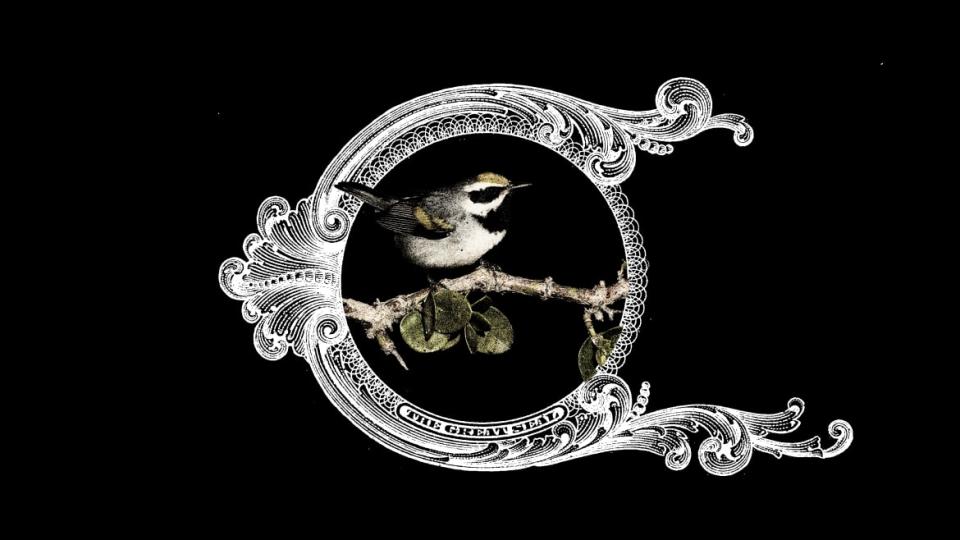Forests Are Being Destroyed and ‘Nature Lovers’ Are Helping

In July 1921, Benton MacKaye, founder of regional planning and the visionary behind the Appalachian Trail, held a historic meeting with fellow preservationists in the remote New Jersey lodge that was to become Hudson Farm.
Dedicated to the protection of the nation’s last wild places, they were channeling the inchoate spirit of the coming age with a grand vision for the public domain that would advance the public interest and the democratic ideal on vast landscapes.
The first step toward this end, they said, was to liberate land from industrial capitalism. The Appalachian Trail (AT), proclaimed MacKaye, would be “in essence a retreat from profit.”
How Climate Change Could Lead to a New Pandemic
The property on which this fateful meeting was held is now owned by the Wall Street billionaire Peter Kellogg. It’s a fitting fate for the old lodge where the AT was born, as MacKaye’s vision of preservation is increasingly captured, co-opted, and perverted by private corporate interests.
This dynamic is on gruesome display in New Jersey, on a parcel of public land called Sparta Mountain Wildlife Management Area, where loggers have started cutting old forest just a few miles from Kellogg’s exclusive Hudson Farm Club.
On one side of the controversial fight over the logging of Sparta Mountain WMA is a citizens’ group of fierce local environmental activists, NJ Forest Watch, which advocates for strict protection of the state’s woodlands. On the other, surprisingly, is a well-heeled green group that Kellogg helps to fund, New Jersey Audubon—one of the oldest birding groups in the nation.
So far, the preservationists at NJ Forest Watch are losing the fight.
NJ Audubon, along with the New Jersey Department of Environmental Protection (DEP), various state hunting associations, and wealthy local sport-hunting boosters (including Kellogg), cooperated with logging interests under the cover of an insidious new model of management that emphasizes the chainsawing of healthy mature forests for the sake of creating an artificial young forest habitat.

This management paradigm—which is funded by the U.S. Department of Agriculture (USDA) and state partners via groups like the Young Forest Project—is based on the false belief that logging, done right, can mimic the natural disturbances that produce what ecologists call early successional habitat, where shrubs and young trees are predominant. Certain birds, like the beloved golden-winged warbler, and other species that hunters seek out, such as white-tailed deer and wild turkey, thrive in young forest habitat.
Now, it’s possible that cutting down forests for the purpose of creating such habitat might improve the chances for a minuscule selection of target species—specifically the ones that Audubon birders want to mark in their life lists or ones that hunters (like Kellogg) wish to kill. But proponents of this logging-for-wildlife program tend to overlook the fact, backed up by numerous experts, that it wreaks havoc on an enormously greater number of native species that depend on mature unlogged forests.
Richard Enser, a conservation biologist formerly with the Rhode Island Natural Heritage Program, told me in an email that “clear-cutting destroys a substantially more biodiverse habitat in exchange for a species-depauperate habitat.” He added: “We always hear about the few species that will benefit from clear-cutting without any mention of the species that will be reduced or lost. And of course, when looked at from a biodiversity perspective, factoring in ALL species (insects, fungi, etc.) the losses are considerable. If clear-cutting plans were subject to an environmental impact statement, in which a proper cost/benefit analysis was conducted, it would be very difficult to justify the true costs.”
According to Bill Wolfe, a former planner with the New Jersey Department of Environmental Protection, logging-for-wildlife in the Sparta area has fragmented the forest with roads, disturbed soils and vegetation, reduced canopy cover, introduced invasive species, and has been “targeted not at scores of rare and threatened interior bird species, but a single species, the Golden Winged Warbler, that requires scrub/shrub habitat.”
And, as it does everywhere, logging at Sparta releases vast amounts of carbon stored in unfragmented forests, carbon that will not be re-absorbed for a century or more.
John Terborgh, one of the world’s premier conservation biologists, observes that there’s “no conservation reason for creating more early successional habitat.” Cutting trees to expand such habitat, he told me, “is a bogus argument, ginned up as an excuse for more logging. But the argument could work with a gullible public.”
In other words, logging-for-wildlife is based on junk science.
And yet, the bogus justifications are working to maximum effect at Sparta Mountain, home to 130 threatened, endangered and “special concern” species. Aided and abetted by state and federal agencies, loggers in this 3,500-acre parcel have been brandishing their chainsaws in an area specifically preserved at taxpayer expense for the benefit of wildlife.

I visited Sparta last March in the company of Silvia Solaun, a local resident turned forest partisan who is now the executive director of NJ Forest Watch. We hiked through clearcuts of red oak, counting the tree rings of the felled specimens. Solaun estimated some of the trees to be 150 years old.
“150-year-old trees. It makes me sick,” she said. “And here’s New Jersey Audubon advocating for logging of our state’s best, healthiest, oldest, most diverse forests.”
Intriguingly, two decades ago, NJ Audubon offered a radically different perspective on protection of the state’s forested preserves.
“One of the most devastating causes of ecological degradation is fragmentation resulting from new developments and roads,” wrote NJ Audubon’s then-director Eric Stiles in a 2002 white paper. “Fragmented forest and wetland habitats have more predation, more parasitism, and less vertebrate diversity than intact habitats.”
What accounts for the astonishing about-face, such that today the group celebrates logging, roading, and forest fragmentation under the aegis of young forest chainsaw management?
Solaun says the reason is the usual one: money.
In recent years, NJ Audubon has enjoyed infusions of young forest funding from the U.S. Department of Agriculture amounting to as much as $648,000. (As I reported in my book, This Land: How Cowboys, Capitalism, and Corruption Are Ruining the American West, critics of the USDA have long asserted that it is an agency captured by and subservient to logging interests, and that its funding choices reflect that bias.)
“There’s a lot of money to be made if you’re a nonprofit and you support logging and hunting,” Solaun told me.
UN Climate Experts to the World: We’re Already Fucked
New Jersey Audubon also received $330,000 from Kellogg, the Wall Street billionaire. Kellogg and his ilk have been frank as to what is wanted from this investment in conservation: decimate the public forests so that entitled elites can have an easier time killing animals for sport. (I reached out to NJ Audubon for comment, but have yet to receive a response.)
This is all part of a broad toxification of the environmental movement, which has taken a regressive turn toward collaboration with big business, wealthy donors and corporate-backed foundations. Green groups that embrace market-based initiatives, rather than stand up for sensible regulation and strict enforcement of environmental laws, are the ones that get lavish funding.

Look, for example, at the wealthiest conservation nonprofit in the U.S., the business-friendly Nature Conservancy, whose board consists mostly of corporate executives, Wall Street bankers, and one-percenter investment managers.
The unconscionable logging of Sparta Mountain—with New Jersey Audubon as an accomplice—is a disgusting example of how this baronial neoliberal influence plays out, with powerful environmental groups in the U.S. now serving as greenwashers for the monied interests with whom they collaborate.
From them we hear nothing in the noble spirit of Benton MacKaye, nothing about a call for a retreat from profit.
Get the Daily Beast's biggest scoops and scandals delivered right to your inbox. Sign up now.
Stay informed and gain unlimited access to the Daily Beast's unmatched reporting. Subscribe now.

 Yahoo Movies
Yahoo Movies 
